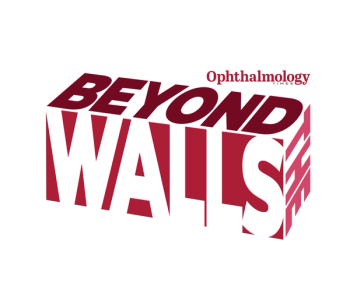
Wavefront-guided enhancements treat post-LASIK error
Minneapolis, MN-Wavefront-guided enhancements seem to be very effective for correcting residual refractive error after a primary LASIK procedure. The enhancement procedure using the CustomVue Wavefront system (VISX/Advanced Medical Optics) results in significantly better Snellen uncorrected visual acuity (UCVA) than that achieved with conventional enhancements, according to David R. Hardten, MD.
"Refractive over-correction and under-correction are the most common complications after LASIK. Wavefront-guided treatments have been shown to achieve improved results over conventional treatments during primary LASIK procedures. The question then arises, 'Do wavefront-guided treatments improve enhancement outcomes?' " Dr. Hardten asked. He is director, refractive surgery services, Minnesota Eye Consultants, and clinical associate professor of ophthalmology, University of Minnesota, Minneapolis.
To answer this, Dr. Hardten and colleagues conducted a retrospective case series study in which they performed enhancement procedures to treat residual myopia and myopic astigmatism following primary LASIK. The study took place between July 2003 and October 2004.
Before the primary LASIK procedure, the mean refractive spherical equivalent (MRSE) was –5.82 ± 2.16 D, and the astigmatism was 0.78 ± 0.56 D. Prior to the enhancement, the mean UCVA was 20/45, the MRSE –1.00 ± 0.57 D, and the astigmatism 0.48 ± 0.39 D. The mean higher-order aberrations (HOAs) were as follows: total HOAs 0.42 ± 0.15 µm, coma 0.24 ± 0.14 µm, trefoil 0.15 ± 0.11 µm, and spherical aberrations 0.18 ± 0.15 µm, Dr. Hardten recounted.
A VISX Star S4 CustomVue wavefront-guided procedure was performed in all patients with a nomogram adjustment. In all cases, the target was plano. The flap was lifted in all cases. The patients were followed on the first day after the procedure and 1 month after. The last follow-up visit was a mean of 5.66 ± 3.75 months after surgery.
"One day after the enhancement, 75% of eyes had an UCVA of 20/20 or better, 89% 20/25, and 98% 20/40. At the 1-month visit, 69% saw 20/20 or better, 83% 20/25, and 100% 20/40. At the final follow-up visit, 70% saw 20/20 or better, 86% 20/25, and 100% 20/40," Dr. Hardten reported.
In addition to good visual acuity results, the refractions were stable, Dr. Hardten pointed out.
"During the follow-up period, 77.1% of eyes changed 0.5 D or less, and 95.2% of eyes changed 1.0 D or less," he said.
The enhancement procedures were relatively safe. No eye lost more than one line of best spectacle-corrected visual acuity. No intraoperative complications developed, yet postoperatively five eyes (6.0%) developed diffuse lamellar keratitis, and three eyes (3.6%) developed epithelial ingrowth. One eye (1.2%) required that the flap be lifted to treat the epithelial ingrowth about 4 years after the initial surgery and 2 months after the enhancement surgery. Striae did not develop in any eyes.
Dr. Hardten described a study that he and his colleagues published in 2002 in which they compared conventional and wavefront-guided LASIK procedures (Davis EA, Hardten DR, Lindstrom M, Samuelson TW, Lindstrom RL. LASIK enhancements: A comparison of lifting to recutting the flap. Ophthalmology 2002;109:2308-2314).
Newsletter
Don’t miss out—get Ophthalmology Times updates on the latest clinical advancements and expert interviews, straight to your inbox.



















































.png)


